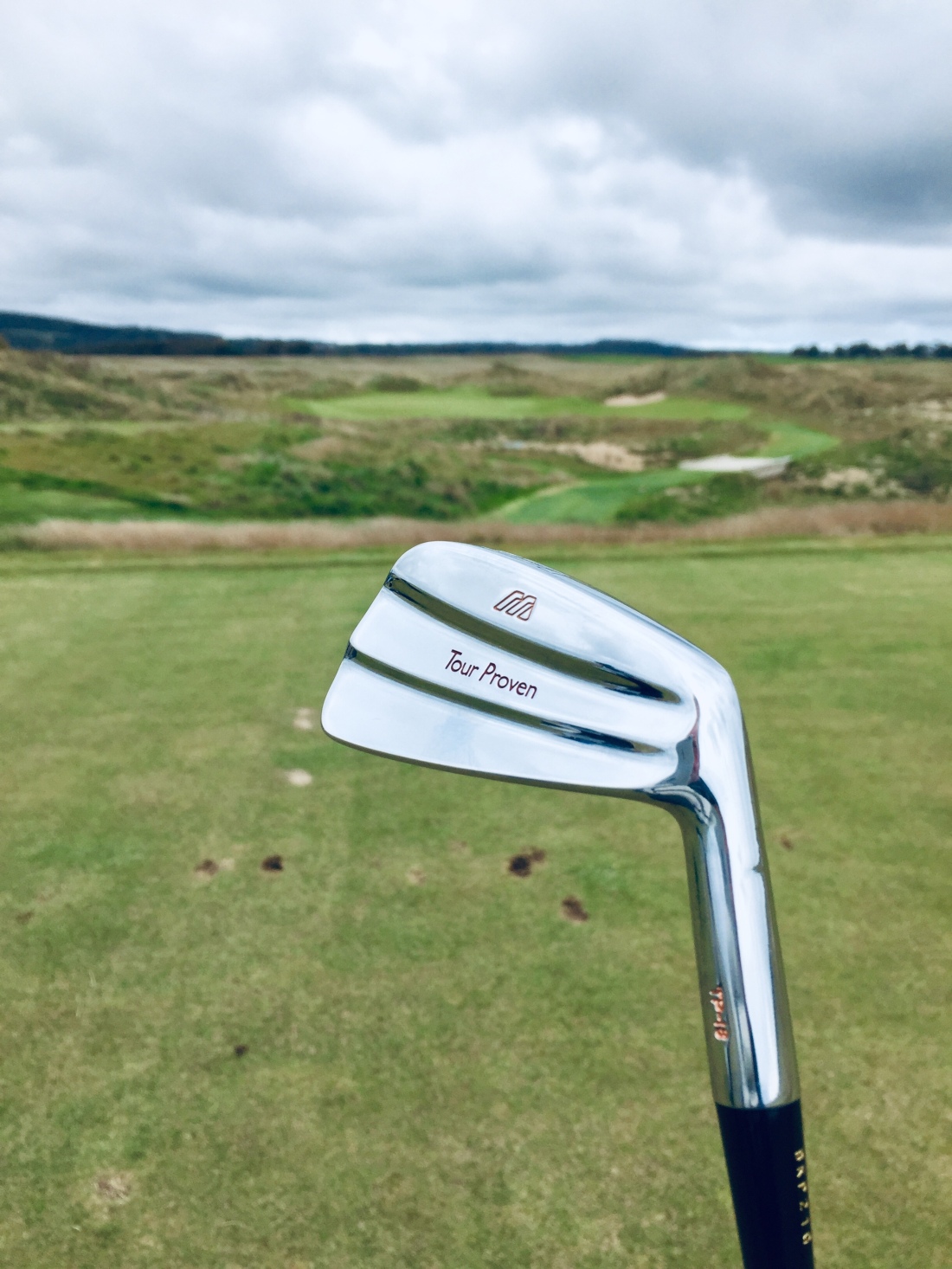
Mizuno Tour Proven
This blog charters the history of “Mizuno TP” – how the brand came into being, the characteristics and significance of its various clubs and their derivation from Japanese parent models.
Background
Mizuno had been present in the UK golf market in the early 80’s, but a defining moment came when Neil Coles (high-profile player on European tour) and Barry Willett (leading club-maker based at St. George’s Hill GC in Surrey) came together to offer a “tour van” at the 1984 Open at St. Andrews. Its success, and the subsequent decision to seek support from Mizuno, brought the company to the forefront for many top players in Europe.

The support the tour van offered meant Mizuno clubs received extensive play on the European tour from 1985/86 onwards, which provided a perfect marketing platform for Mizuno to launch a range of clubs “used by the Pro’s.”
Before 1986, Mizuno had sold “Mizuno Pro” and “Mizuno Pro MS” in the UK/Europe, but a decision was made to try something different for the UK/European market.
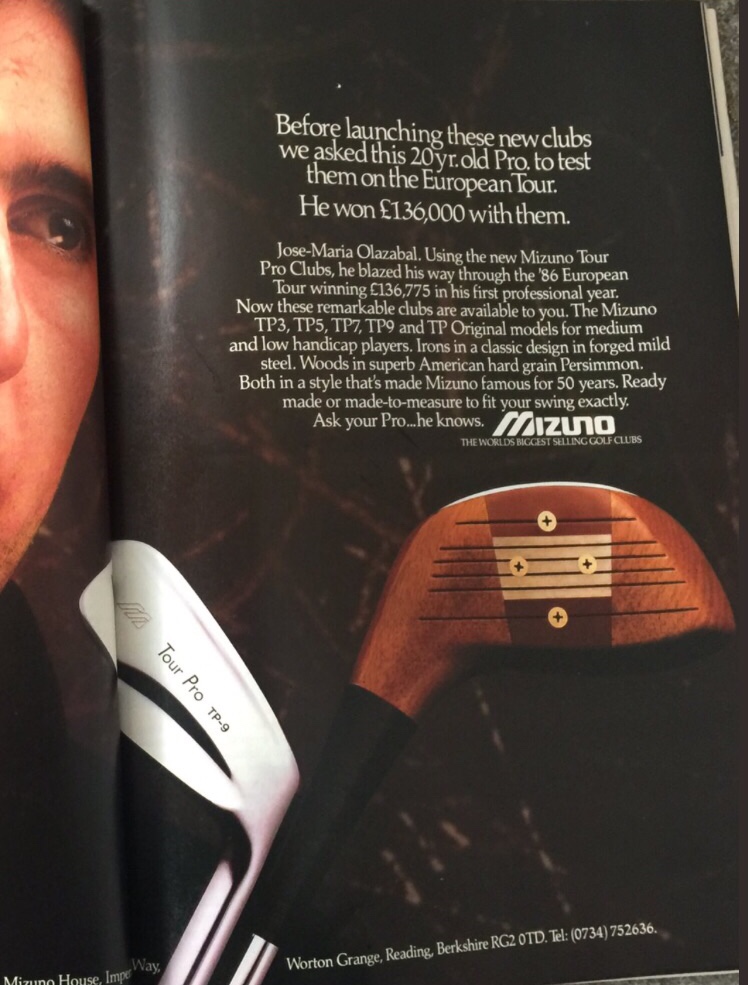 TP was originally launched as “Tour Pro”. The above 1986 advert lists a range of models – TP-3, TP-5, TP-7, TP-9 and TP Original irons as well as persimmon woods, which I assume refer to TP-5.
TP was originally launched as “Tour Pro”. The above 1986 advert lists a range of models – TP-3, TP-5, TP-7, TP-9 and TP Original irons as well as persimmon woods, which I assume refer to TP-5.
“Tour Pro” continued into 1987 as this cool advert for TP-9’s from the Open programme at Muirfield shows. The change to the famous “Tour Proven” seems to have taken place in ‘87/‘88.

Hopefully the following covers the vast majority of TP-branded clubs. I suspect there are one or two tour-only models missing, but hope the retail options are covered.
Irons
TP-9
 Most famous of the TP models, TP-9 ran from 1986 into mid-90’s. Had a lot of tour play including Faldo’s ‘87 Open win at Muirfield (blank set, sometimes known as “TP-P”) and his first Green Jacket in ‘89. José-Maria Olazábal another notable admirer.
Most famous of the TP models, TP-9 ran from 1986 into mid-90’s. Had a lot of tour play including Faldo’s ‘87 Open win at Muirfield (blank set, sometimes known as “TP-P”) and his first Green Jacket in ‘89. José-Maria Olazábal another notable admirer.
“Blanks” were also released in USA in LH, but strangely an equivalent Japan model was absent I believe in terms of a wide release. A similar winged-back satin club was produced for USA market though, named Mizuno MS-7.
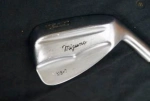
TP Original

These heads were also used in Japanese market, and were very successful in TP branding. Lasted on tour well into 90’s.
TP-3; TP-5 & TP-7
TP-9 and TP Original quickly became the preferred models on tour and in retail, and the 3,5&7 models were essentially only available as custom orders. The original Tour Pro line-up in the 1986 catalogue was as follows:
 The 3,5&7 models were in fact re-stamped heads from the previous MS Pro line – such as this #7 model.
The 3,5&7 models were in fact re-stamped heads from the previous MS Pro line – such as this #7 model.

TP-7 seems to have been quickly discontinued (rare pic below), but TP-3 and TP-5 at least lived to see the change to Tour Proven, as this excerpt from a 1989 magazine shows:

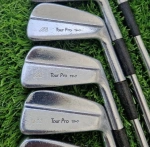
TP-10
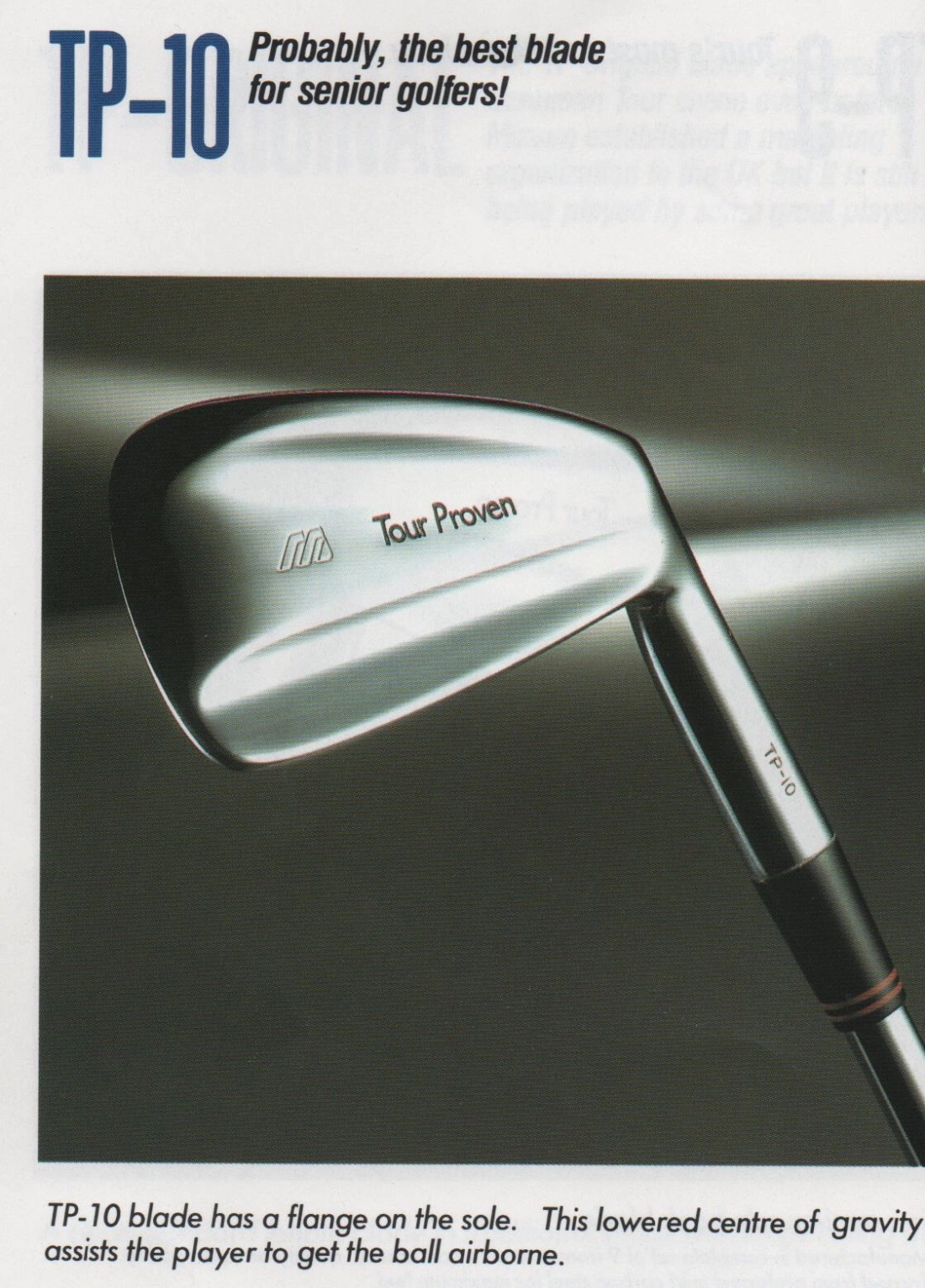
1990, originally marketed for seniors and strong ladies, the model was a “game improvement blade” with wider sole and plenty of weight low in the head. Equivalent model in Japan was Pro MS-10.

TP-11

Very popular and long-running model from 1988-1994. Sandy Lyle’s green-jacket winning 7-iron from fairway bunker at 18th on Augusta Sunday certainly helped.
MS-9/MP-9 in USA and Pro MS-11 in Japan were very similar. Wayne Grady won his USPGA with MS-9.
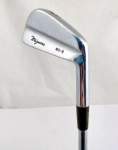
TP-Z
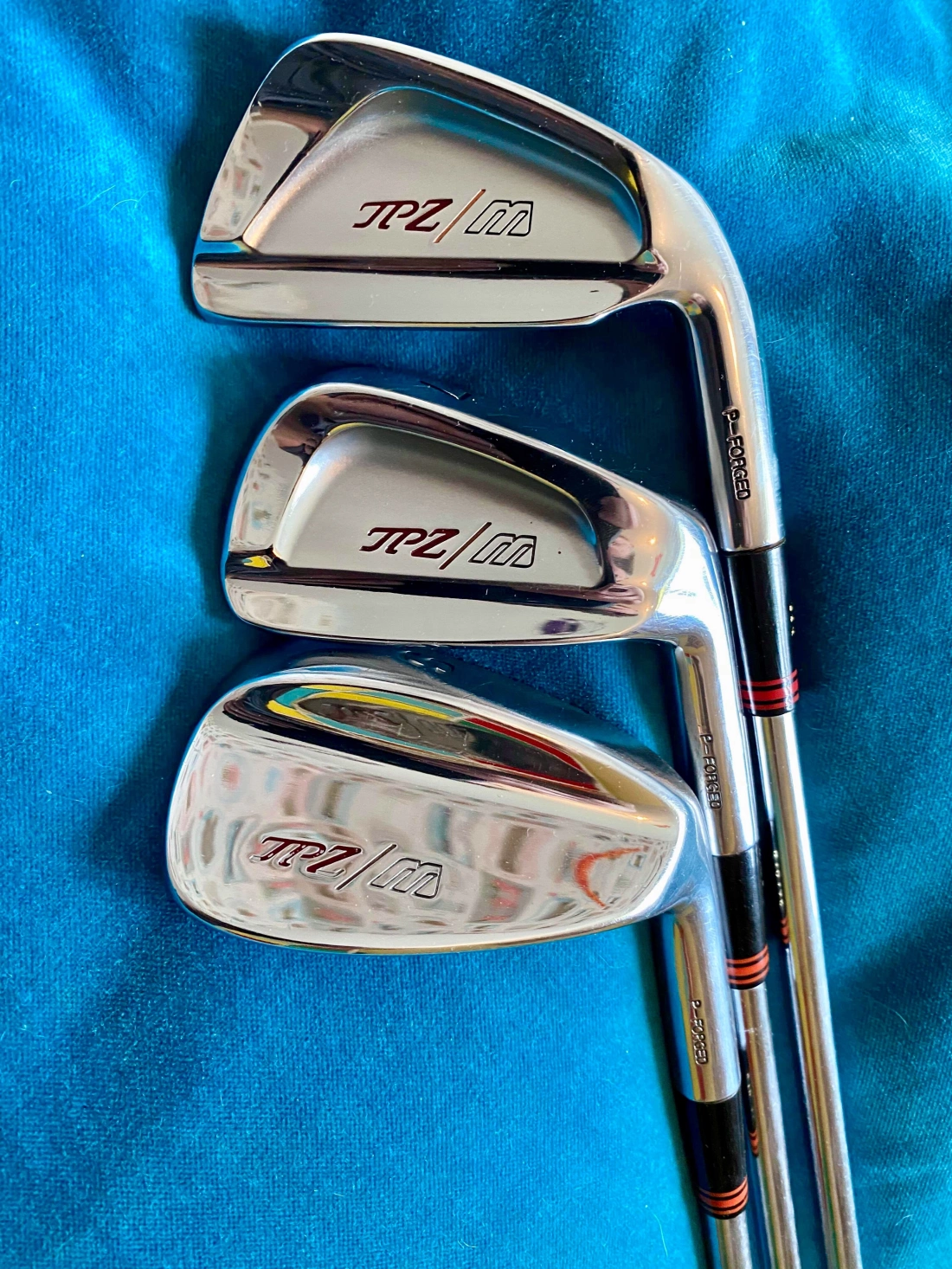 Progressive forged cavity and blade set. Very popular in USA as “Grad MP” and in Japan with another stamping variation. Underrated set in TP form. 1990-1993.
Progressive forged cavity and blade set. Very popular in USA as “Grad MP” and in Japan with another stamping variation. Underrated set in TP form. 1990-1993.
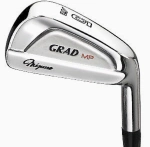

TP-18
 Playable blade that got a lot of tour play – cited as most popular at 1993 Open Championship. 1991 launch. Unusual and innovative hosel design. Barry Willett was a big fan. Sold as Mizuno Pro SS-151 in Japan.
Playable blade that got a lot of tour play – cited as most popular at 1993 Open Championship. 1991 launch. Unusual and innovative hosel design. Barry Willett was a big fan. Sold as Mizuno Pro SS-151 in Japan.

TP-19
 The “Faldo model”, designed with Sir Nick’s input. Bagged for his final Open in ‘92 and last Green Jacket in ‘96. Retail launched in ‘93 and ran until the end of TP. Classic muscle-back with high pointed toe. A very similar (arguably better-looking) model MS-203 is still highly coveted in Japan.
The “Faldo model”, designed with Sir Nick’s input. Bagged for his final Open in ‘92 and last Green Jacket in ‘96. Retail launched in ‘93 and ran until the end of TP. Classic muscle-back with high pointed toe. A very similar (arguably better-looking) model MS-203 is still highly coveted in Japan.
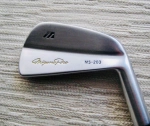
TP-2000
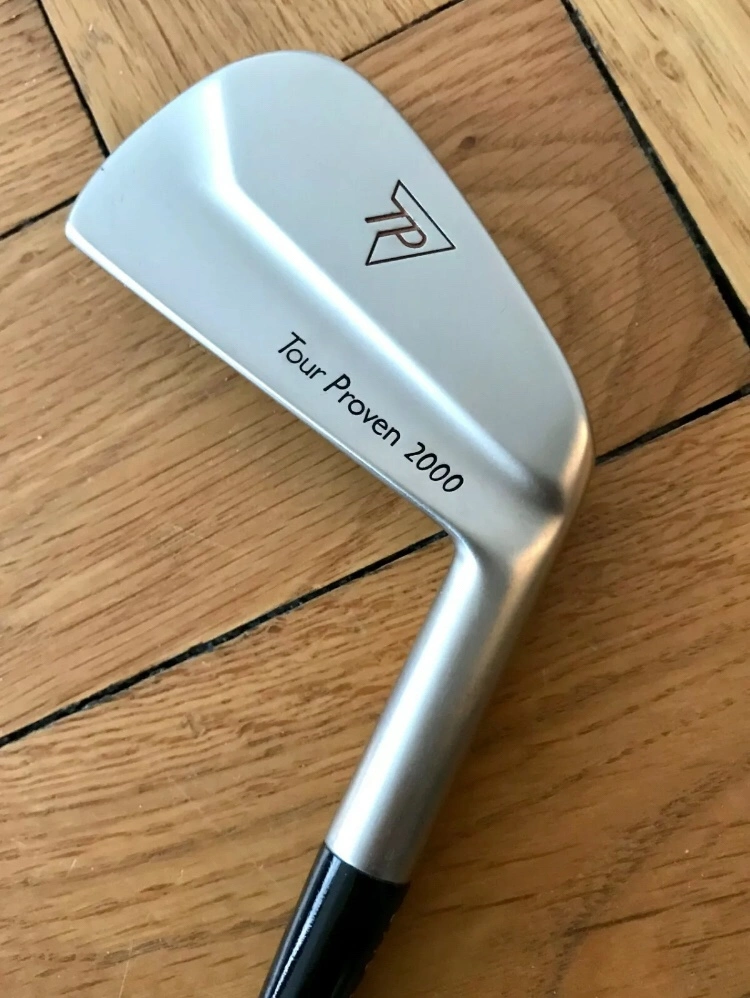
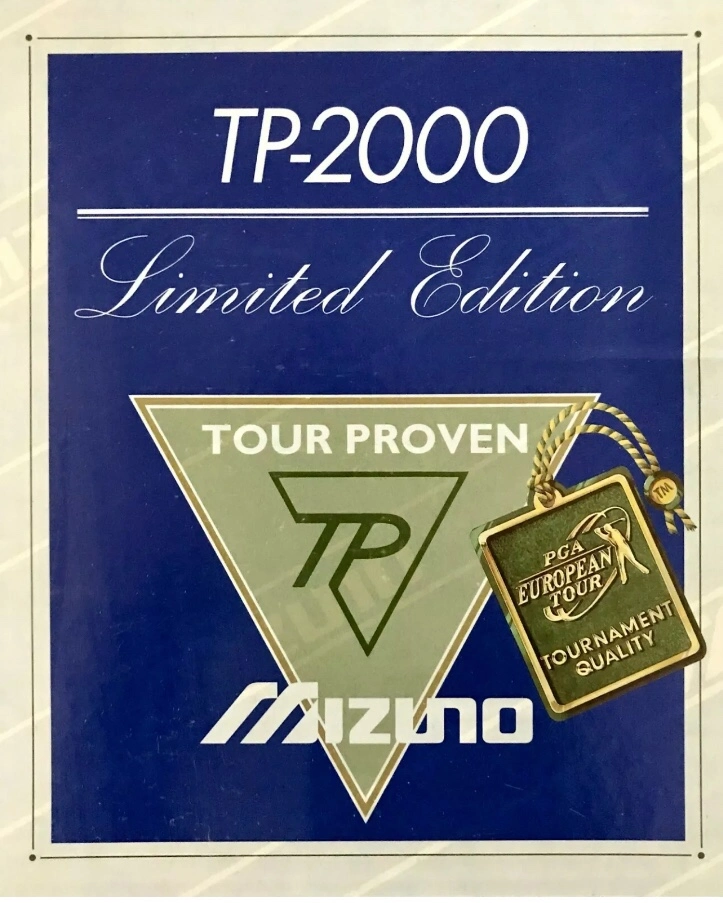
Limited edition model in 1993 to commemorate Mizuno receiving the Tournament Quality Award from the European Tour. 1000 sets. Based on the famous TN-87 set from Japan but forged with ceramic chrome and “champagne” finish. Blank TN-87s were bagged for Faldo’s two majors in ’90. Some tour sets were also stamped with TP branding – Frank Nobilo was a fan. TP-2000s didn’t get the adulation they perhaps deserved.
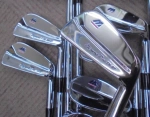

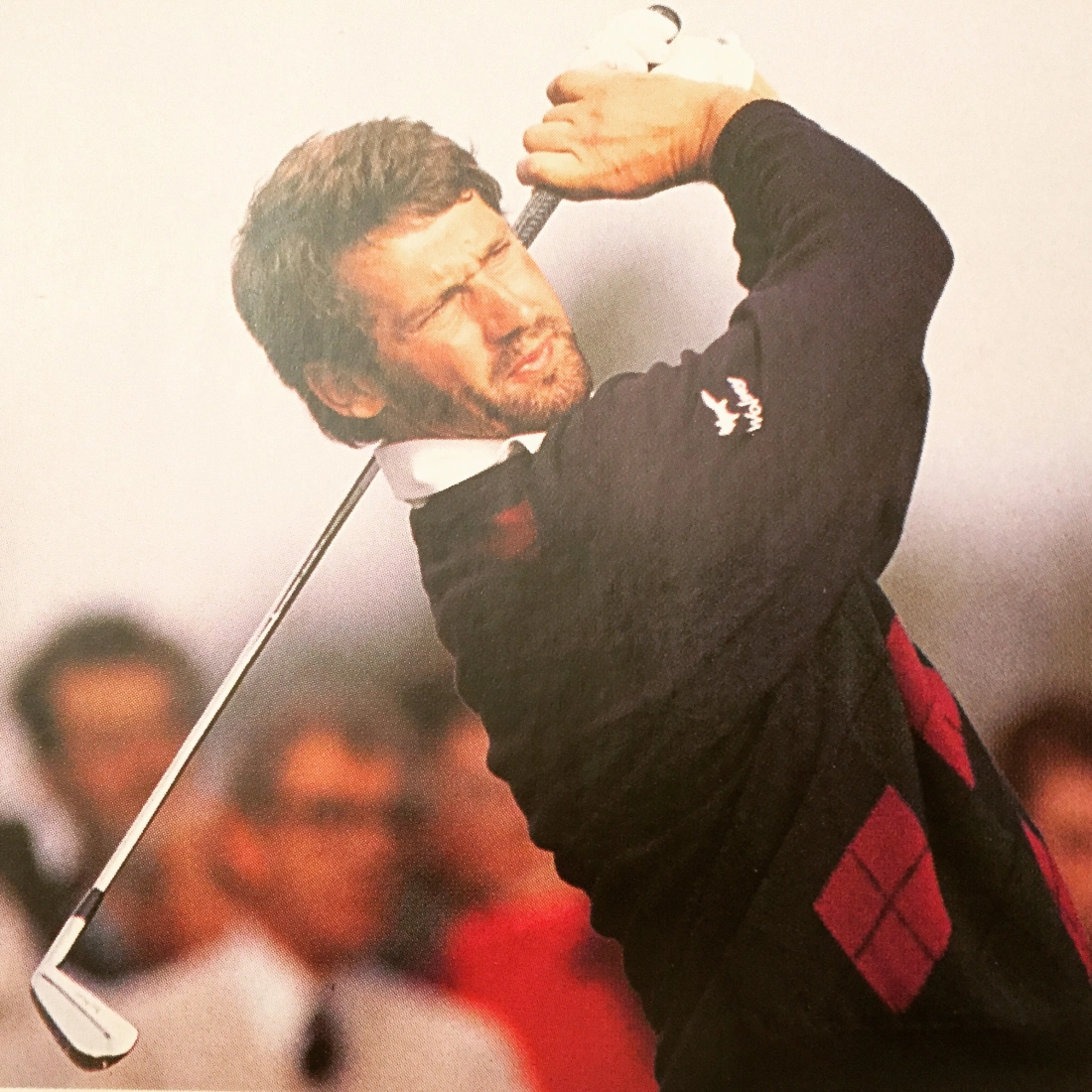
TP-Z Forged
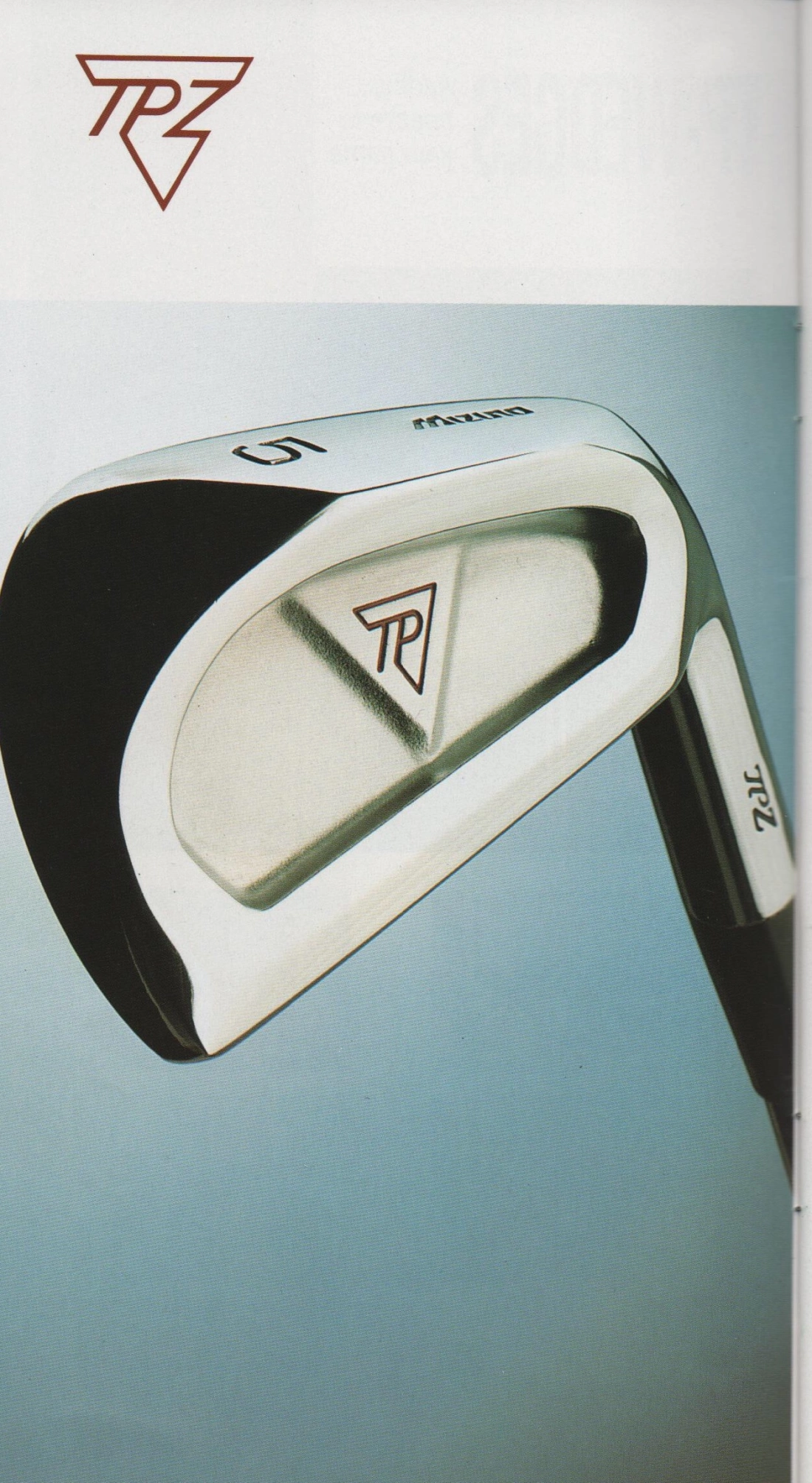 Forged cavity back with the later TP logo. 1994. Solid set that replaced the progressive TP-Z.
Forged cavity back with the later TP logo. 1994. Solid set that replaced the progressive TP-Z.
TP-Z Oversized
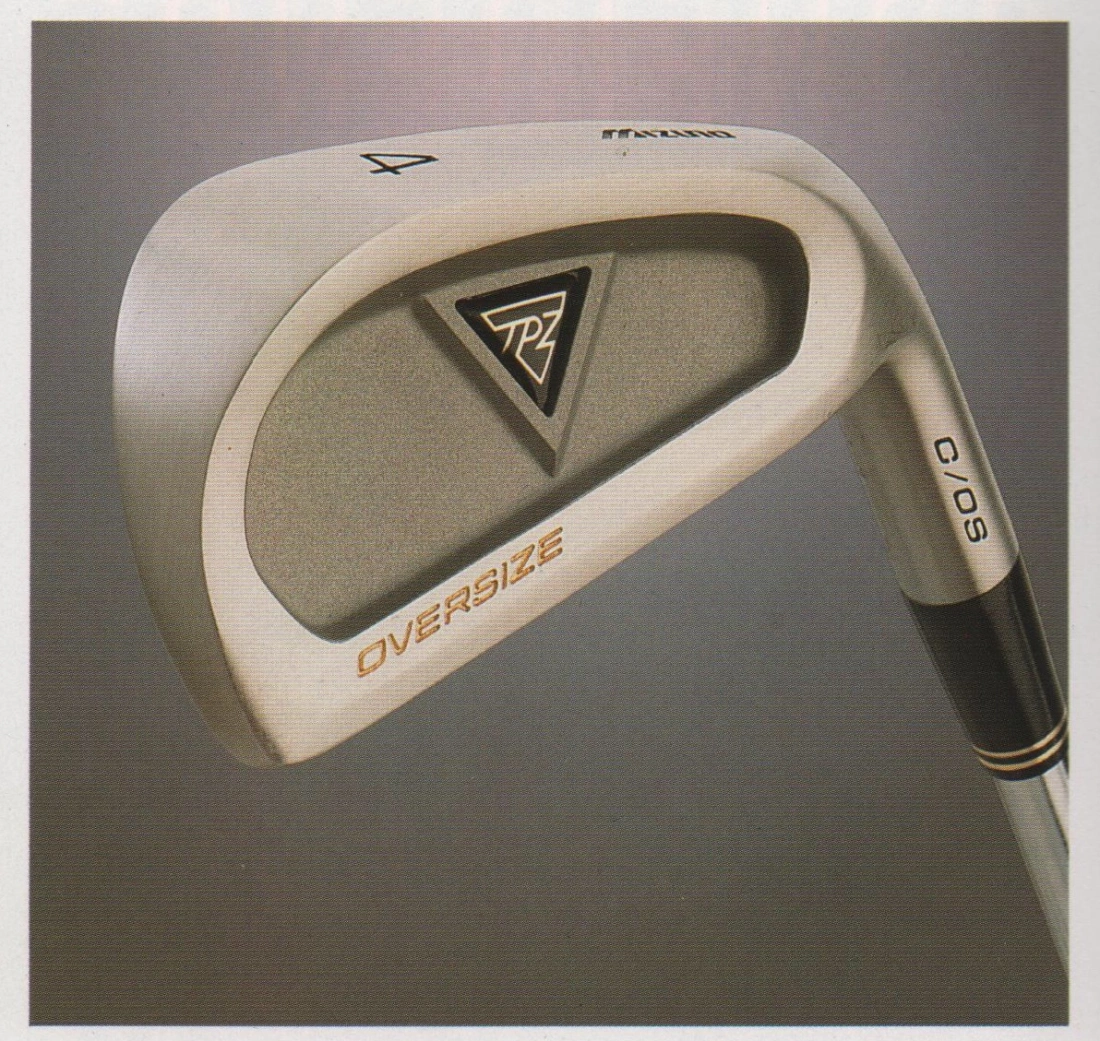 Cast anomaly for TP range. 1995 launch alongside forged cavity set. Presumably responding to market trends for oversized irons at time.
Cast anomaly for TP range. 1995 launch alongside forged cavity set. Presumably responding to market trends for oversized irons at time.
TP-21
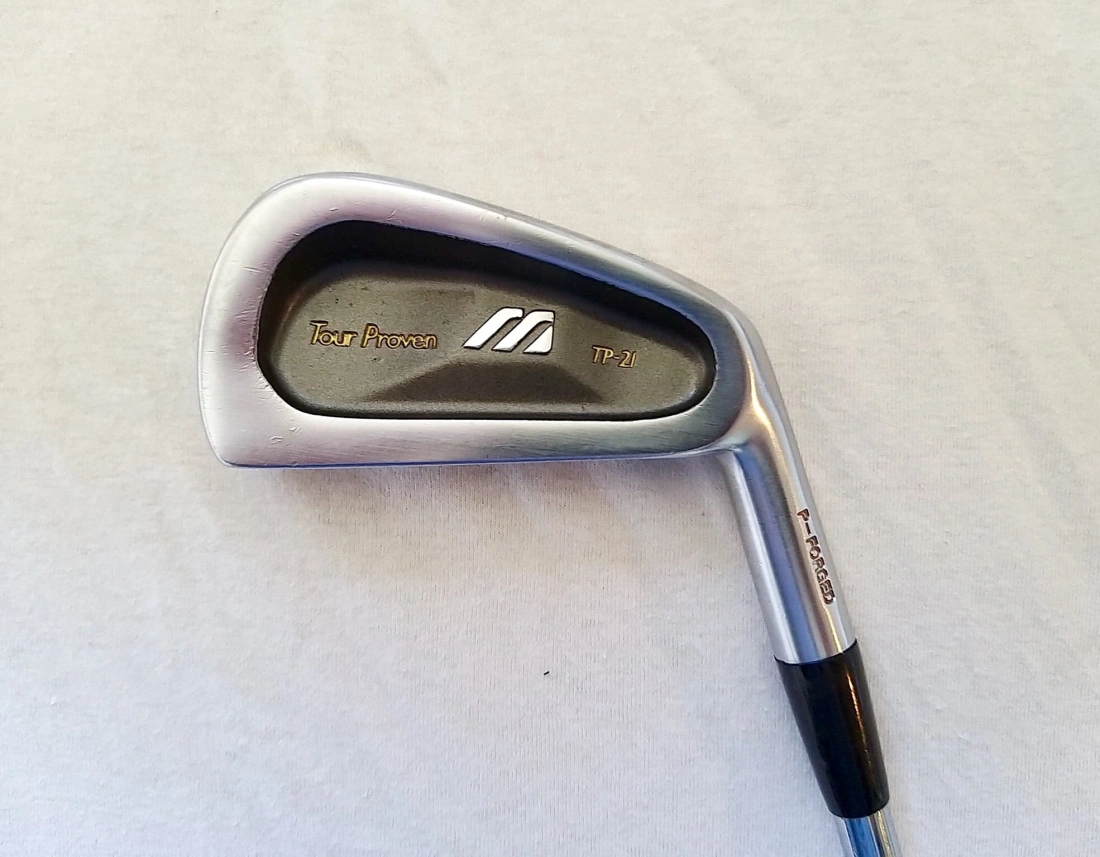 The final flourish for TP in 1996. Nice set with dark green colour in the small cavity. Same head sold as MS-205 “power blade” in Japan. T-Zoid ranges followed and MP in all markets after that. 1998 marked the end of an era for TP.
The final flourish for TP in 1996. Nice set with dark green colour in the small cavity. Same head sold as MS-205 “power blade” in Japan. T-Zoid ranges followed and MP in all markets after that. 1998 marked the end of an era for TP.

TP-21 Prototype
Not released, but I have seen sets of a prototype blade from early 90’s, stamped TP-21 on the hosel. Looks a great blade!
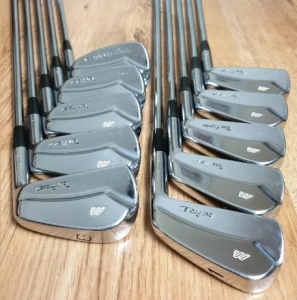
TP-15
Bit of a mystery this one. I believe released very briefly in limited numbers in 1990, but never made catalogues or a full retail launch. Probably categorises as a prototype. Really nice set with thick muscle, thin top-line and minimal consistent offset.

TP-X
Japanese sister set to TP-Z. Progressive cavity/blade design. Cast heads. Early 90’s.

TP-3 (Japan)
Similar branding to the TP-X on this Japan model – very different to the European Custom TP-3 heads.
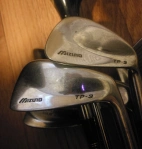
Other Japan Models
Some re-print models of classics stamped “Original” were designated TP in Japan. I own a very rare (limited to one retailer in Japan) Mizuno Pro set with a TP stamp and have seen pics of some other TP sets from Japan. The TP-15 (originally 60’s Grand Monarch) are from 1992.


Woods
TP-5

Superb quality persimmon offering, first launched in 1986 and continued for several years. Early examples were branded “Tour Pro” and had a stained face, later replaced by “Tour Proven”and plain wood around the insert.
Black versions of the TP-5 and some with firing pins were also around from the tour van.
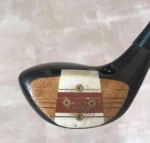
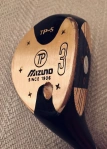
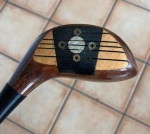
LH TP Original
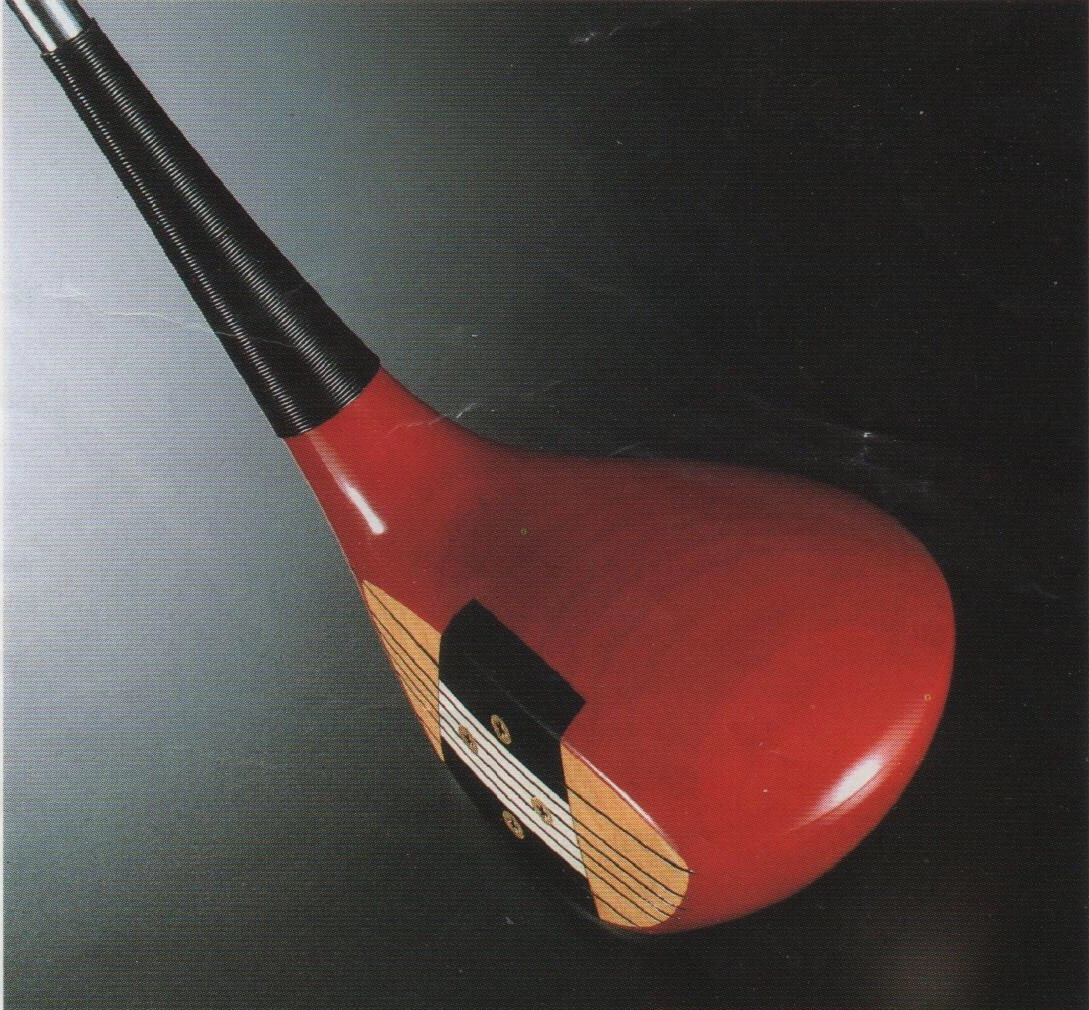 Lefties had a different offering to the TP-5. Inserts were black/white/black (not red/white/red as TP-5) and the older “Mizuno Pro” soleplate was used (stamped TP though) presumably to save costs.
Lefties had a different offering to the TP-5. Inserts were black/white/black (not red/white/red as TP-5) and the older “Mizuno Pro” soleplate was used (stamped TP though) presumably to save costs.
World Master TP Models
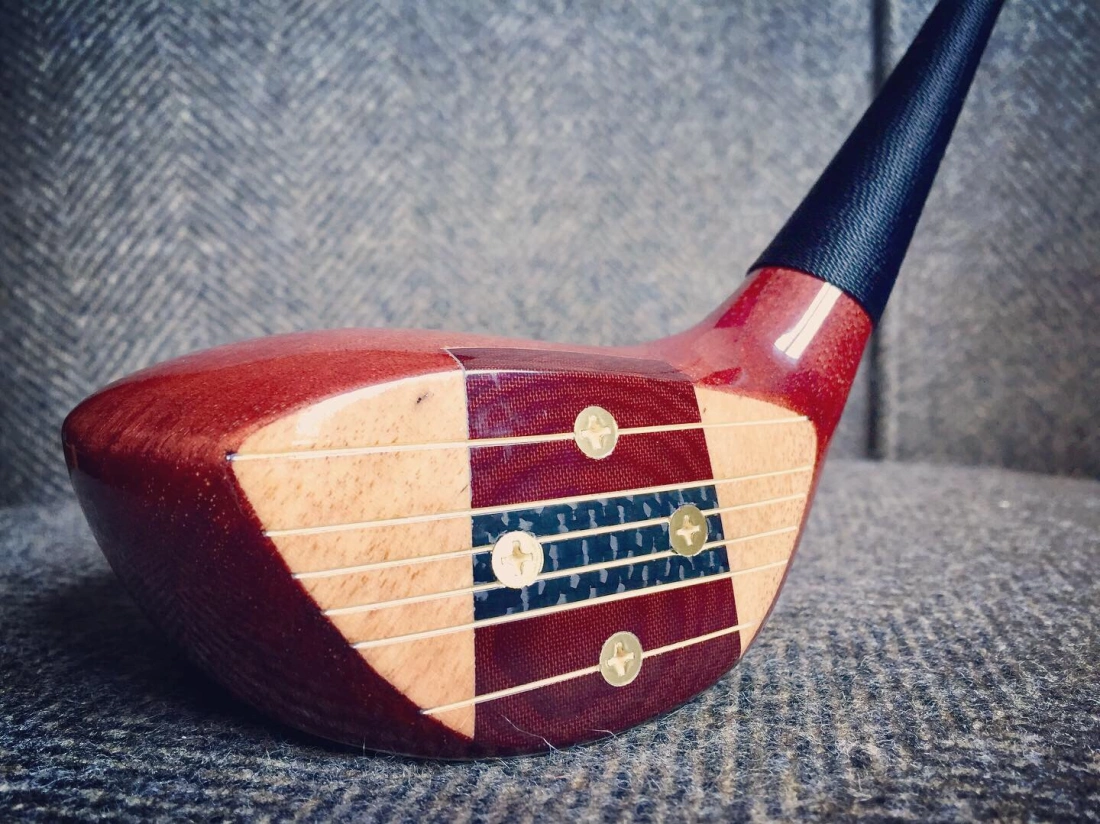
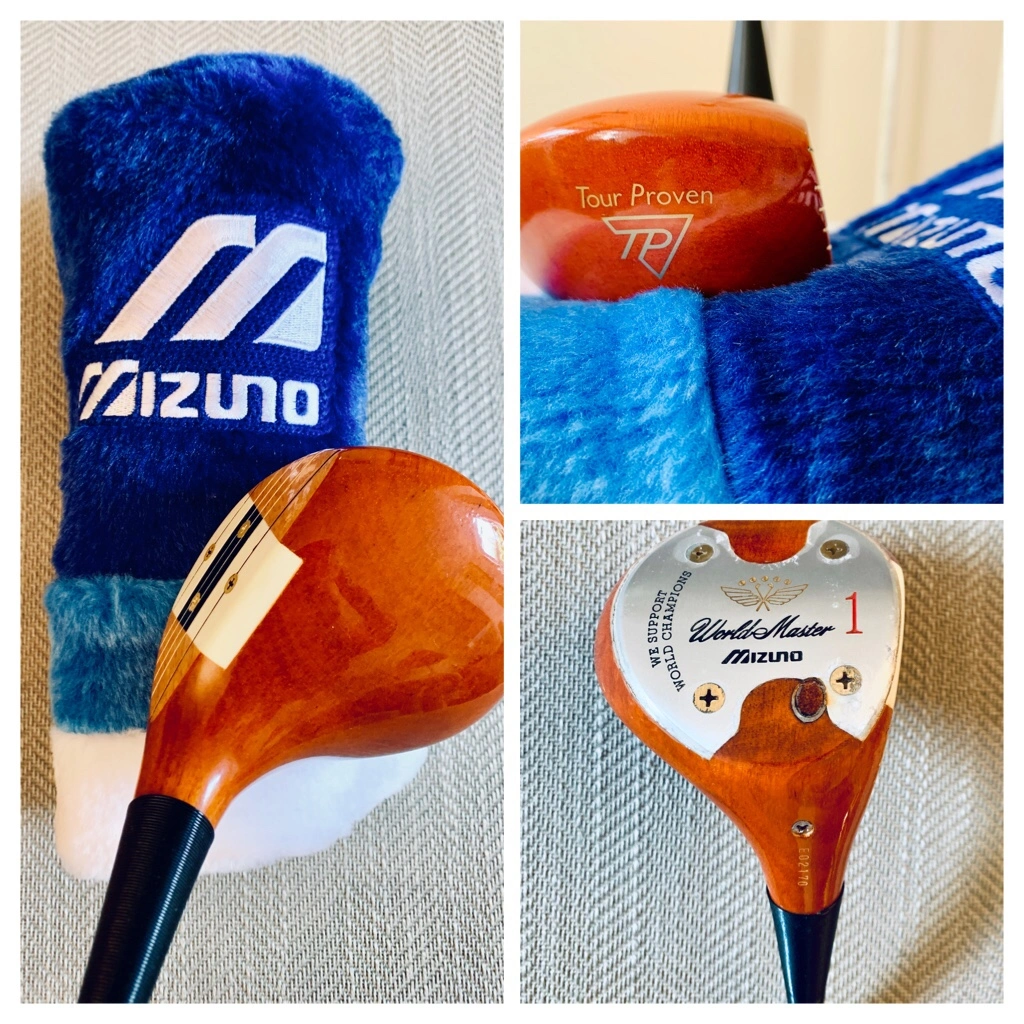 The absolute gold standard for Mizuno persimmon, the World Master woods were very popular on the tour van. Faldo dabbled with these to replace his famous ‘50’s MacGregor M85.
The absolute gold standard for Mizuno persimmon, the World Master woods were very popular on the tour van. Faldo dabbled with these to replace his famous ‘50’s MacGregor M85.
Two limited runs were made available for retail market with a TP toe decal.
1994 saw 300 steel-shafted rose-wood heads with a sensational Bakelite and graphite insert. 1995 had a orange oak release (300 steel; 100 graphite). Both clubs came with bespoke shaft-bands and grips. Stunning!

TPAW
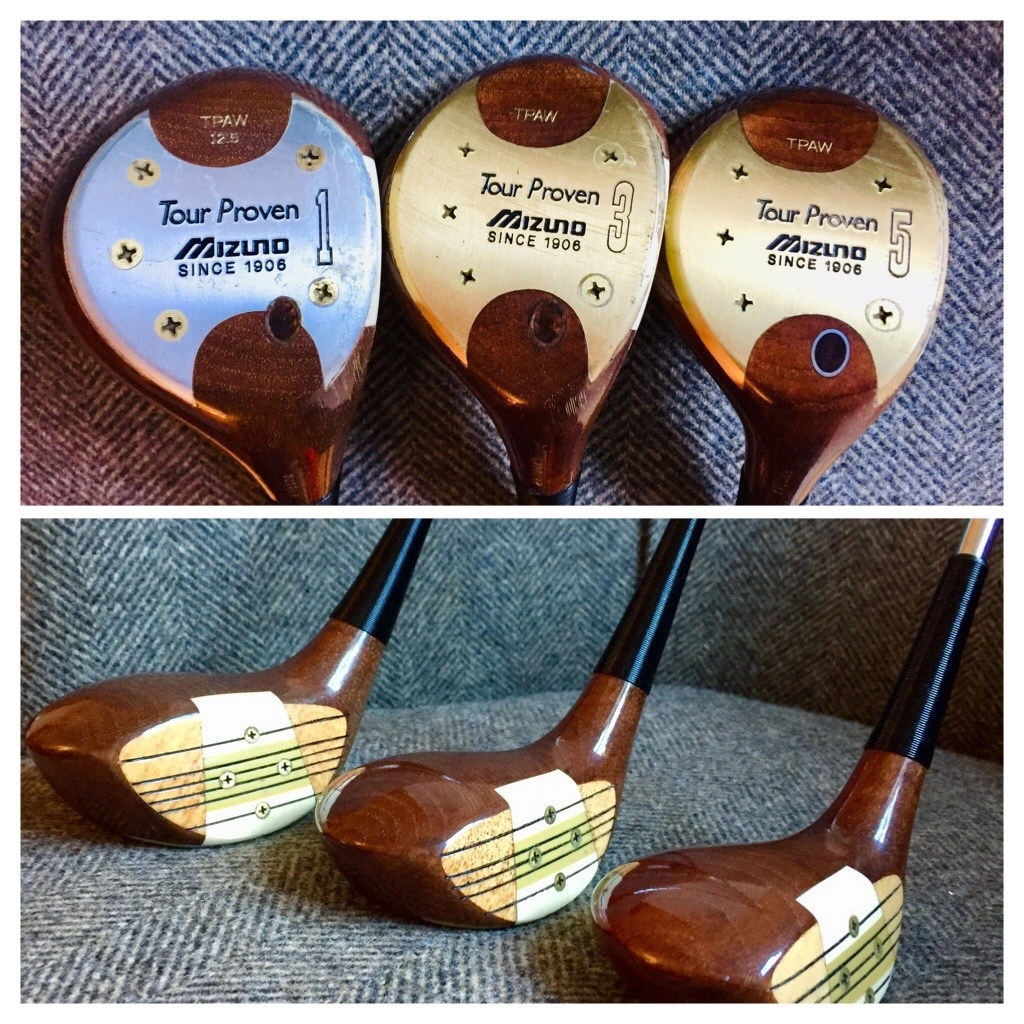
1991 persimmon release that had a later soleplate and an unusual white/cream/white insert. Relatively few sold due to the increasing popularity of metal woods.
TP-11

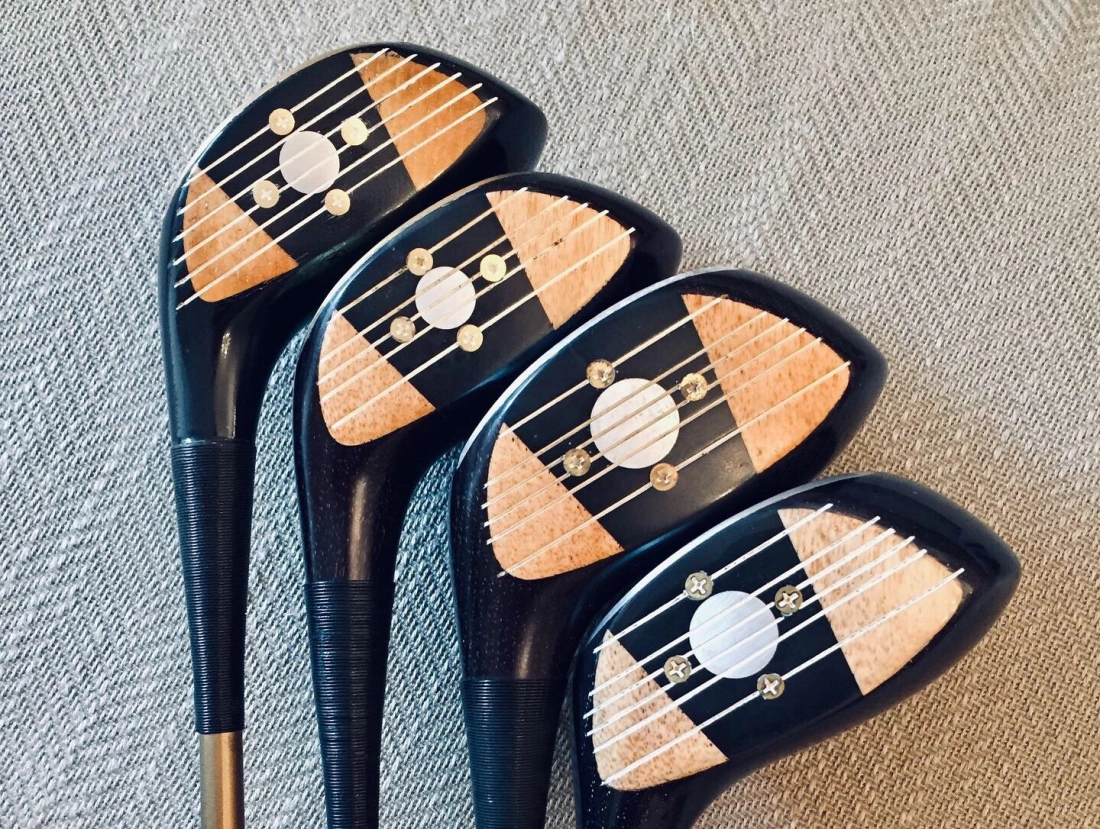 A prevalent and popular tour-only head, stained or painted black with a cool aluminium firing-pin insert. An early version was in the bag of Sandy Lyle at Augusta ‘88, which I suspect was Mizuno’s first major driver victory.
A prevalent and popular tour-only head, stained or painted black with a cool aluminium firing-pin insert. An early version was in the bag of Sandy Lyle at Augusta ‘88, which I suspect was Mizuno’s first major driver victory.
I have seen both the standard TP soleplate and “Craft Model” soleplates (with two stampings) from Japan used on these heads and even seen some of these stamped “TP-5”.
TP-12
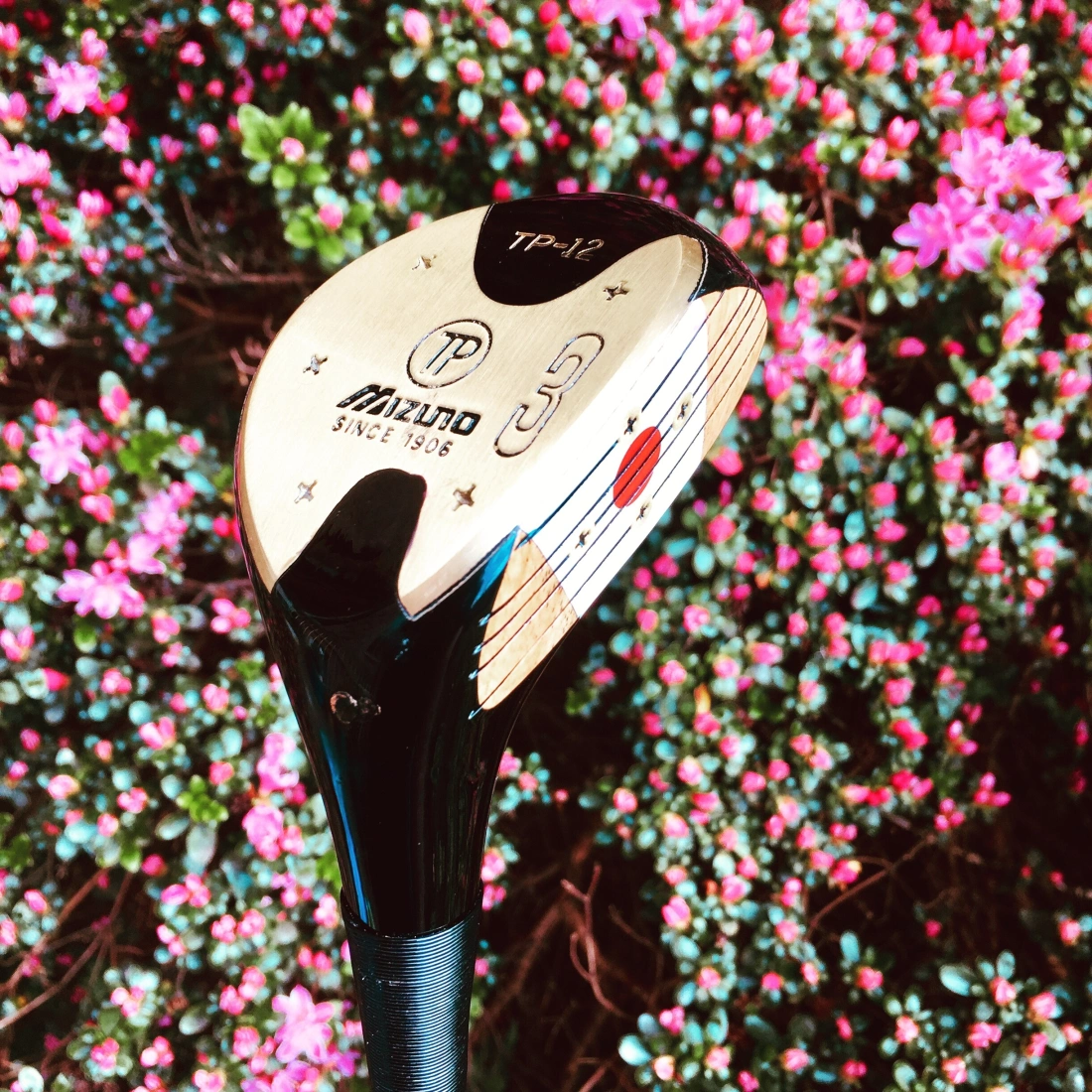 Very rare and tour-only model. Black head with white insert and red bullseye – the Japanese flag?!
Very rare and tour-only model. Black head with white insert and red bullseye – the Japanese flag?!
Tour Van TP Woods
Several other combinations of stain, paint and inserts were available to tour players, made up to specification. Some stamped as “Custom #”, others with no stampings. The TP soleplate was their defining characteristic of relevance to this blog.
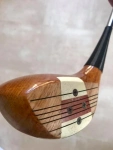
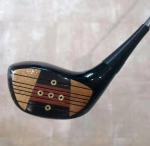


Sadly the numbers of persimmon players were dwindling by the late 80’s and Mizuno were quick to act with premium metal TP heads. Faldo had a prototype Hot Metal in play during his record-breaking 1990 St. Andrews Open win. TP metals were also notable for continuing the success of the Exsar Gold graphite shaft.
TP/15 Hot Metal
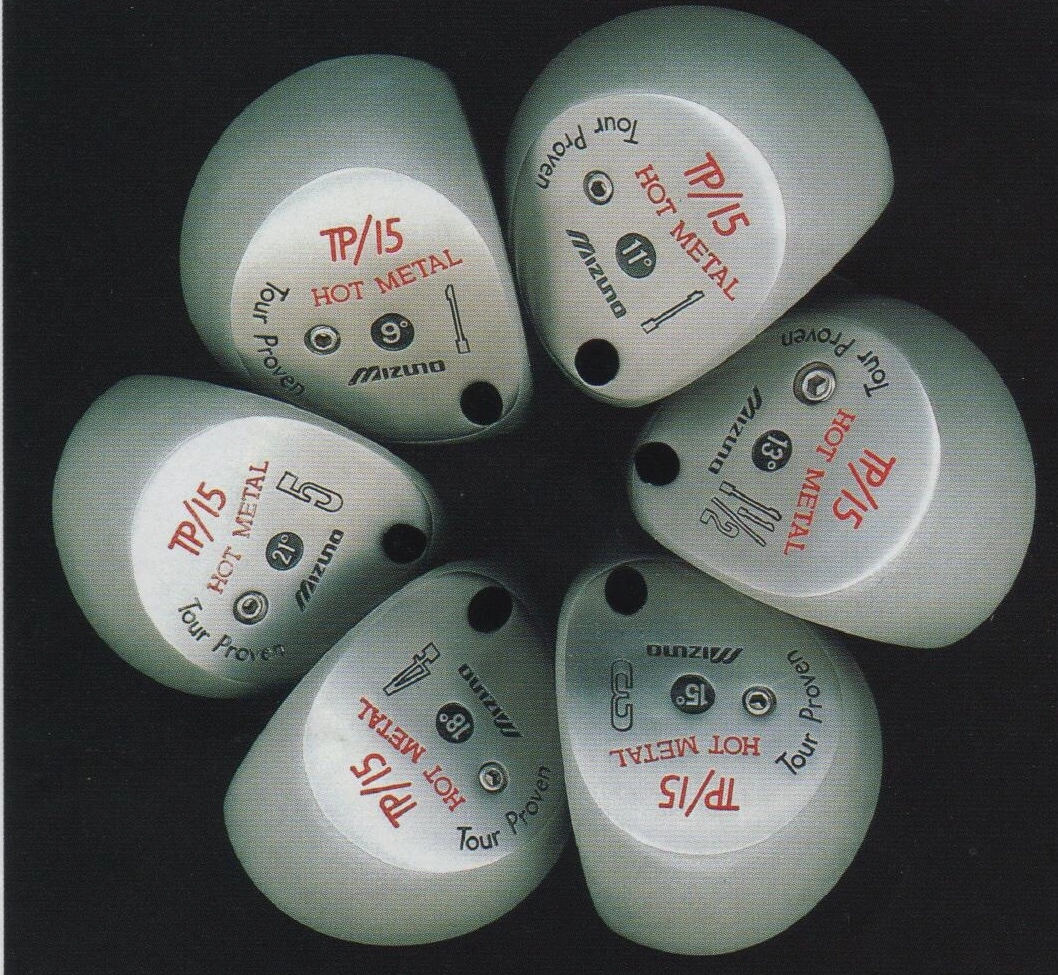
First appeared in 1989 following a non-TP branded Hot Metal the year before. Thru-bore heads in multiple lofts and a standard 7-wood with sole rails.
TP-17
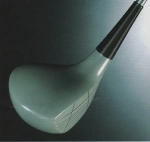
Short-lived (1989/90) and rare, a mid-sized club (driver only) made from magnesium alloy.
TPW 18
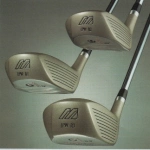
Came along in 1992 with thru-bore design and deeper face. Three driver lofts; 3W and 5W offered with and without sole rails and a railed 7W.
TPW BIG
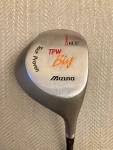
10.5* driver to replace TP-17 – launched in 1992 as a matching alternative to TPW 18.
TPW 19 Hot Metal

Last TPW model in 1993. 9.5*, 11* drivers; 1.5W; 3,5,7 with single sole rail. Super Exsar Gold a nice shaft option.
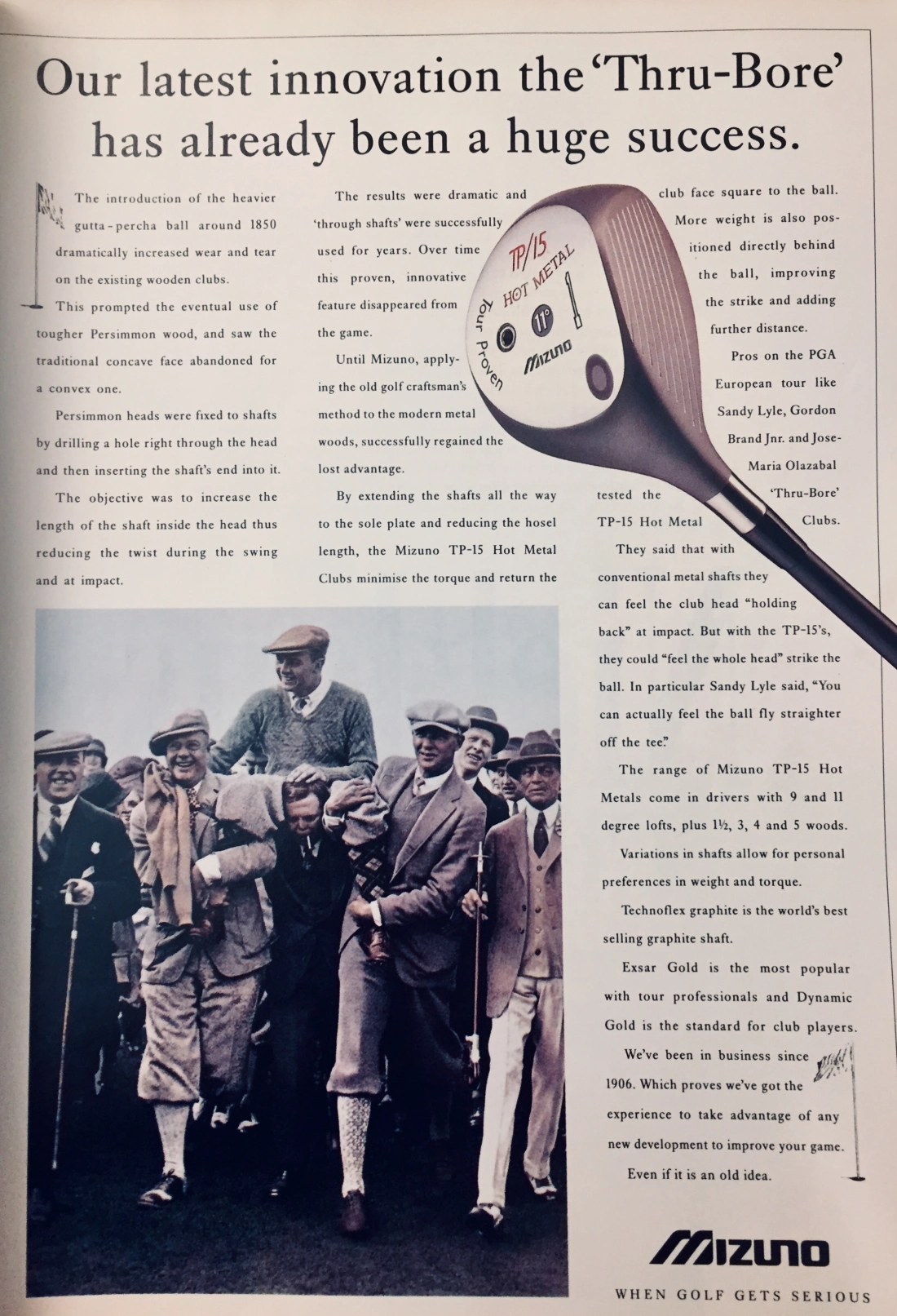
Japan Models
Some metal woods bearing TP stamps were sold in Japan. Example of a Mizuno Pro TP-93 Original shown here.

Wedges
TP-9 BeCu
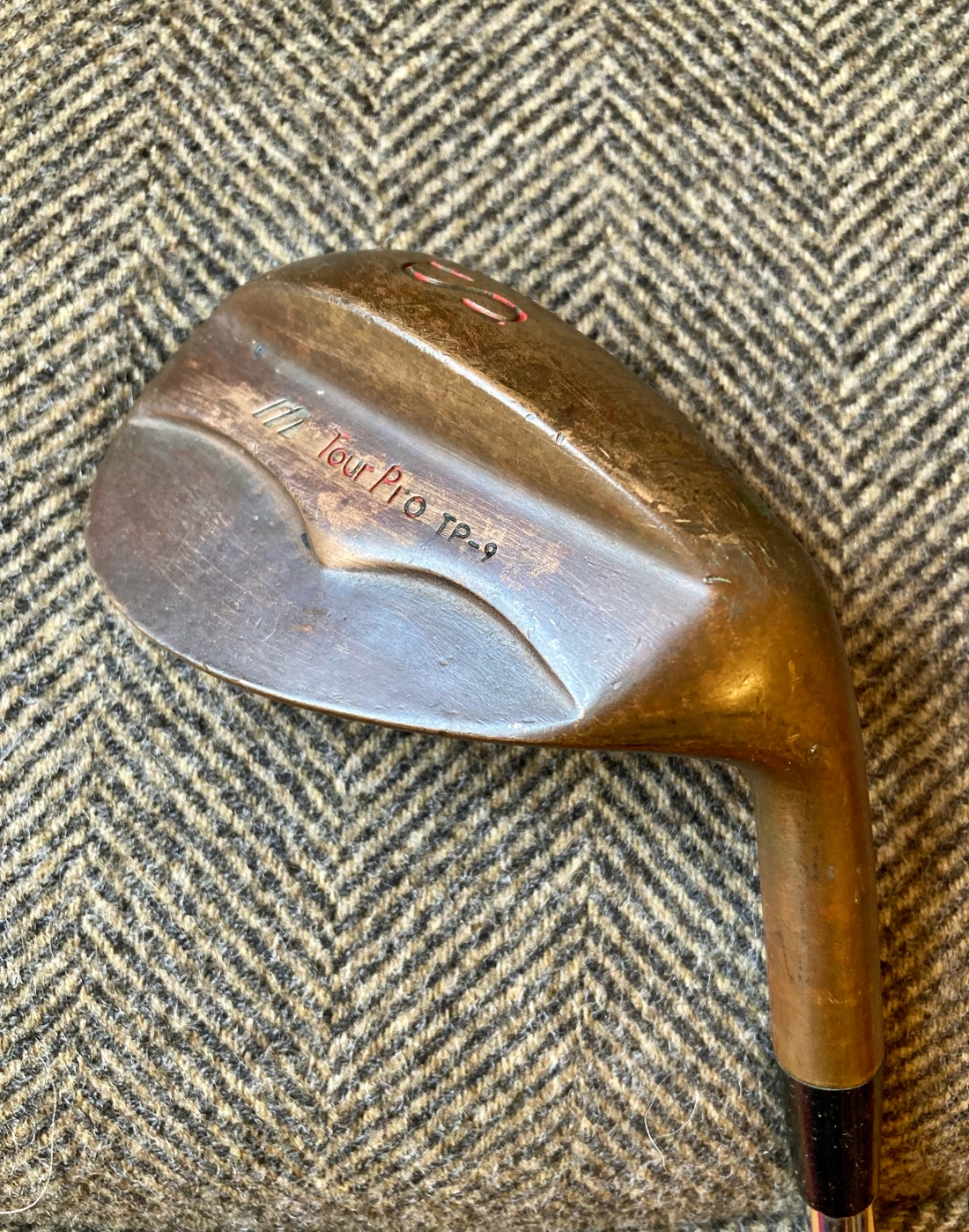 “Tour Pro” dates this rare club to 1986/87. Was subsequently marketed as “RF-60” in the RSF Rough, Sand & Fairway 1988 range with other heads, lofts and grinds.
“Tour Pro” dates this rare club to 1986/87. Was subsequently marketed as “RF-60” in the RSF Rough, Sand & Fairway 1988 range with other heads, lofts and grinds.
TP Aluminium Bronze
 1989 release. These were cool. Available as TP-9 shape and three different bladed heads and two lofts, although the sole was stamped with just “P” or “S” (lofts were on the neck). The TP522 was known as the “Nakajima wedge”. Everyone was doing beryllium copper, Mizuno went aluminium bronze. So soft.
1989 release. These were cool. Available as TP-9 shape and three different bladed heads and two lofts, although the sole was stamped with just “P” or “S” (lofts were on the neck). The TP522 was known as the “Nakajima wedge”. Everyone was doing beryllium copper, Mizuno went aluminium bronze. So soft.

TP Chrome
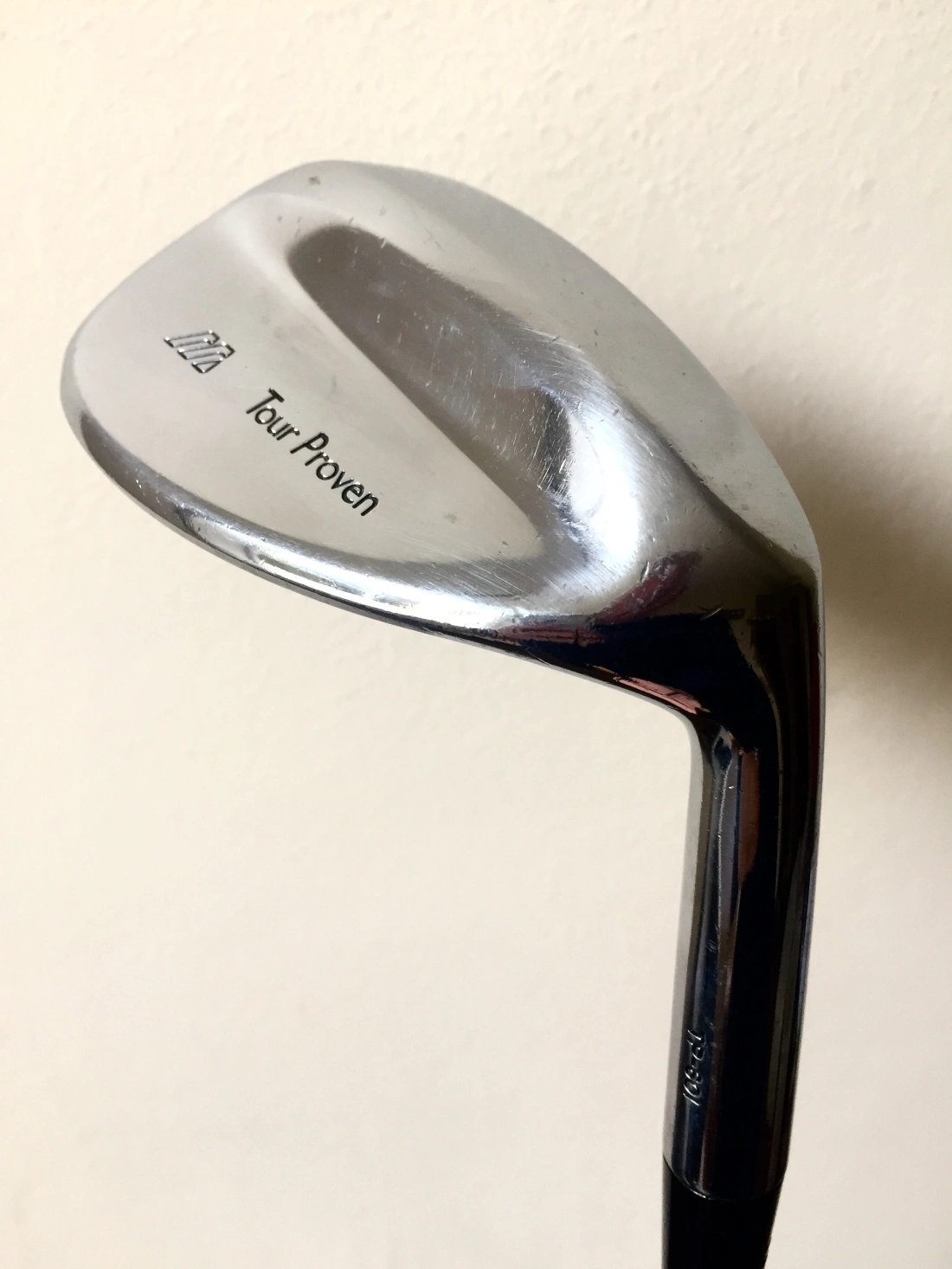 A more modern head-shape and again a good range of loft options. One or more were in the bag for the final four of Faldo’s Majors. Appeared first in 1991 for retail. Later models received a sole stamp; U, S or L.
A more modern head-shape and again a good range of loft options. One or more were in the bag for the final four of Faldo’s Majors. Appeared first in 1991 for retail. Later models received a sole stamp; U, S or L.
TP Faldo
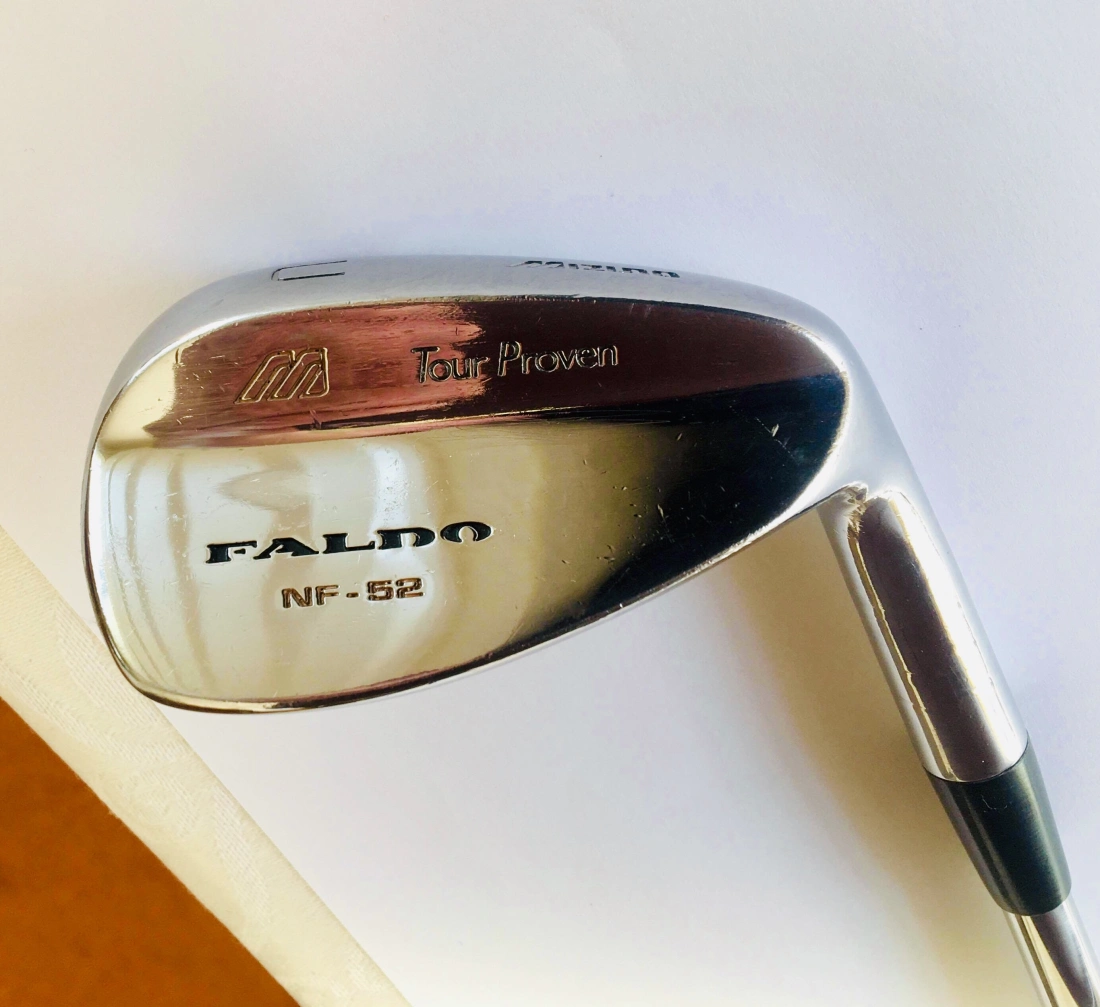 The only TP clubs to get the Faldo branding. Popular range of (cast) wedges that were also sold in Mizuno Pro script in USA and Japan. 1995.
The only TP clubs to get the Faldo branding. Popular range of (cast) wedges that were also sold in Mizuno Pro script in USA and Japan. 1995.
Putters
TP-P9001 & TP-P9002
 Very high quality forged blade putters, first released in 1991. Superb leather grips. 9001 is 8802/Napa shape; 9002 boxier. Also sold in Japan under Mizuno Pro branding. Beauties.
Very high quality forged blade putters, first released in 1991. Superb leather grips. 9001 is 8802/Napa shape; 9002 boxier. Also sold in Japan under Mizuno Pro branding. Beauties.
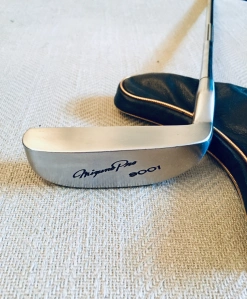
TP P100 series
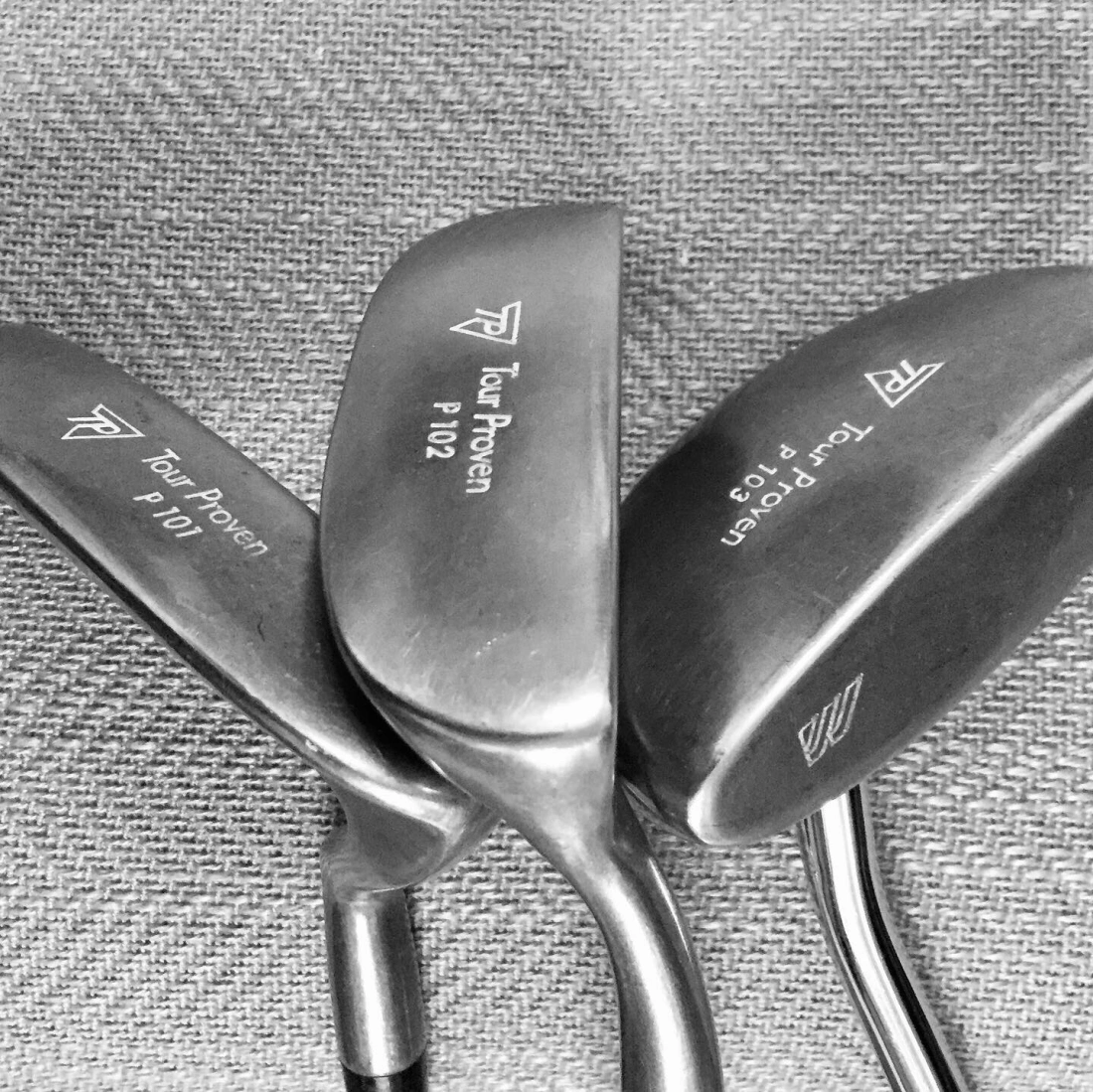
 I have a few of these putters, but don’t remember them first time round and suspect they were tour-only? They are the same (cast) heads as the Japan “RH005X” Models. There was a full range of putters in Japan with several designs – blades, mallets etc. The swan-necked RH0051 was popular enough to have two re-launches.
I have a few of these putters, but don’t remember them first time round and suspect they were tour-only? They are the same (cast) heads as the Japan “RH005X” Models. There was a full range of putters in Japan with several designs – blades, mallets etc. The swan-necked RH0051 was popular enough to have two re-launches.
I don’t believe the full range was available in TP-branding, but I have models P 101,2&3 and have seen the P 104.
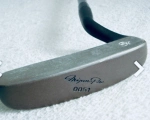
Conclusion
Tour Proven clubs were among the best ever produced by Mizuno and ahead of their time in UK and Europe. It’s a shame in some ways that globalisation and marketing dictated that Mizuno Pro (MP) would soon take over where TP left. Gone were the days when Europe got to savour some classics for themselves. Legendary sets such as MP-33 quickly softened the blow though. I hope this trip down memory lane has been enjoyable and helps to ignite some interest in the TP vintage. NOTHING feels like a Mizuno.
TP set-ups
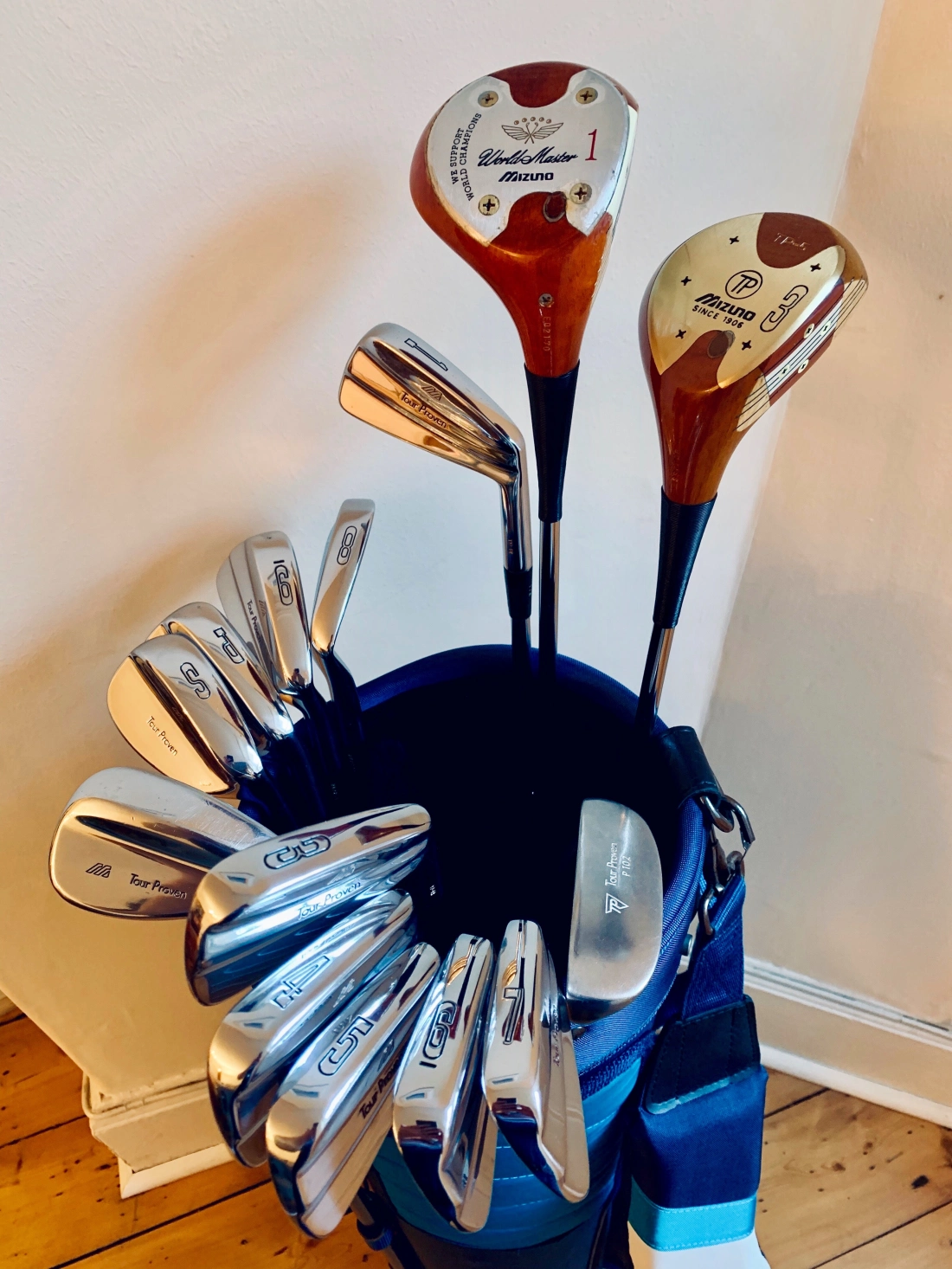
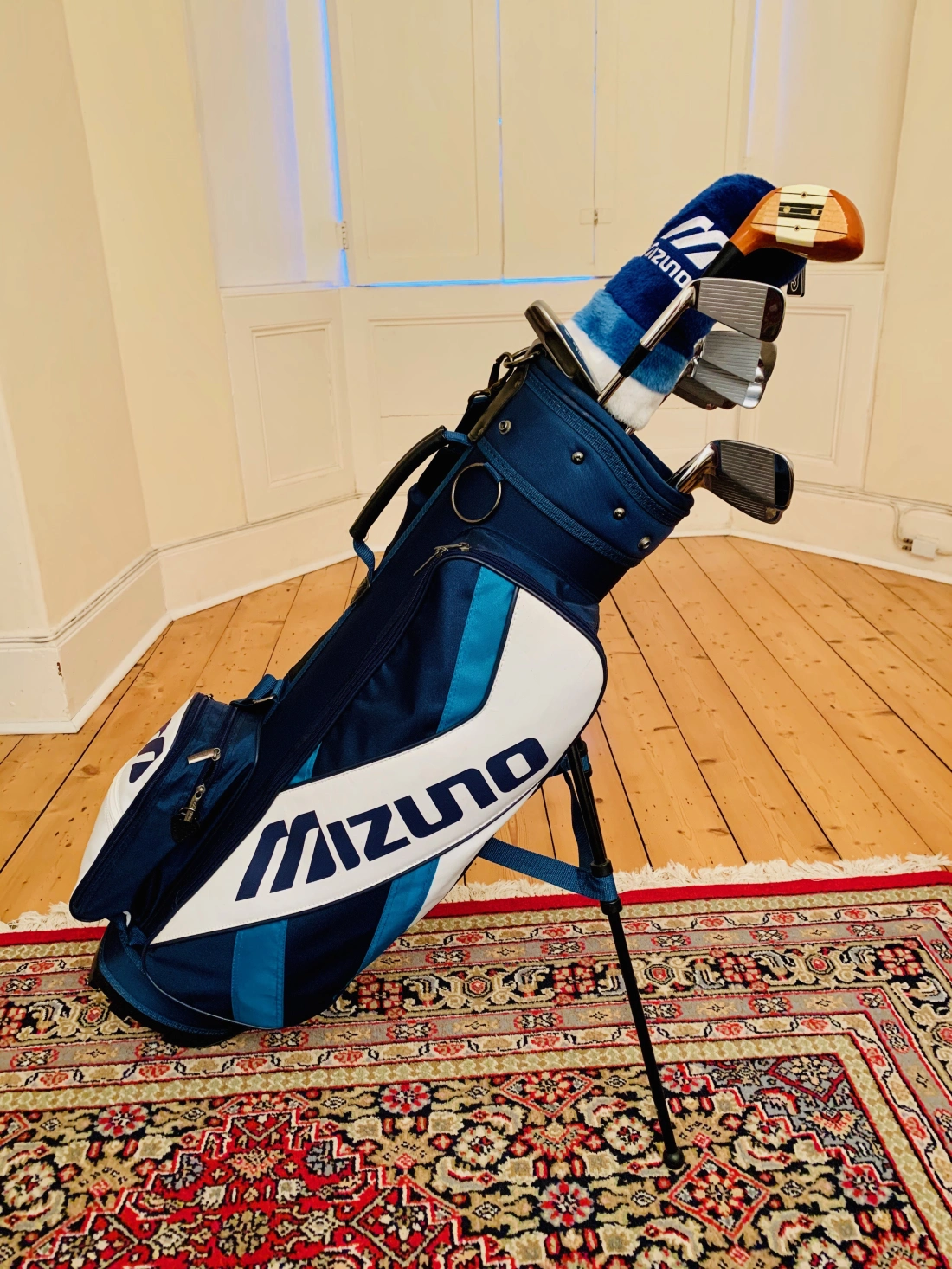 World Master TP 1995 Driver
World Master TP 1995 Driver
TP-5 3W
TP-18 1, 3-SW
TP Chrome 60*
TP P102 Putter


World Master TP 1994 Driver
TP-12 3W
TP-11 3-SW
TP522 Aluminium bronze
TP601 Chrome
TP P9002 Putter
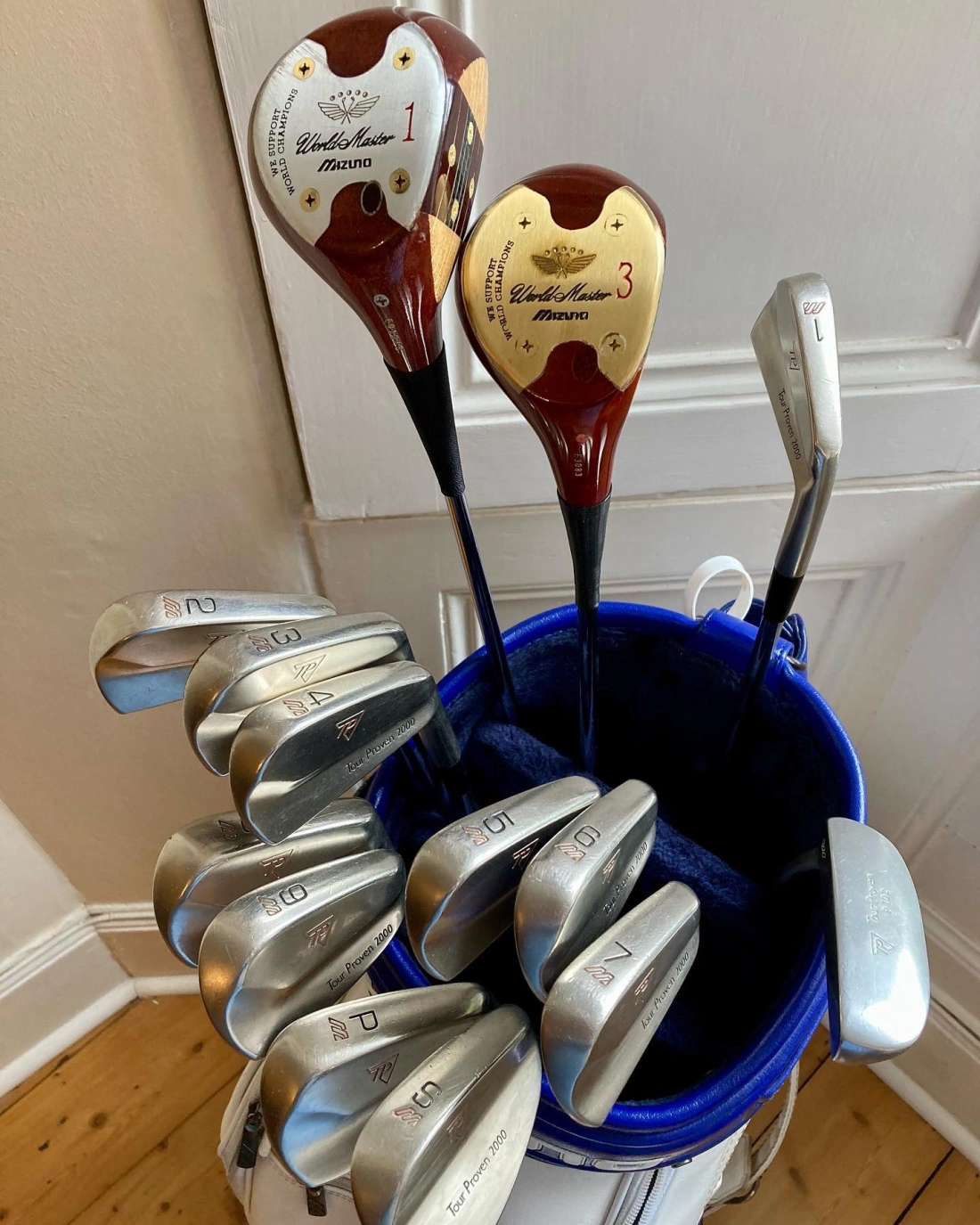

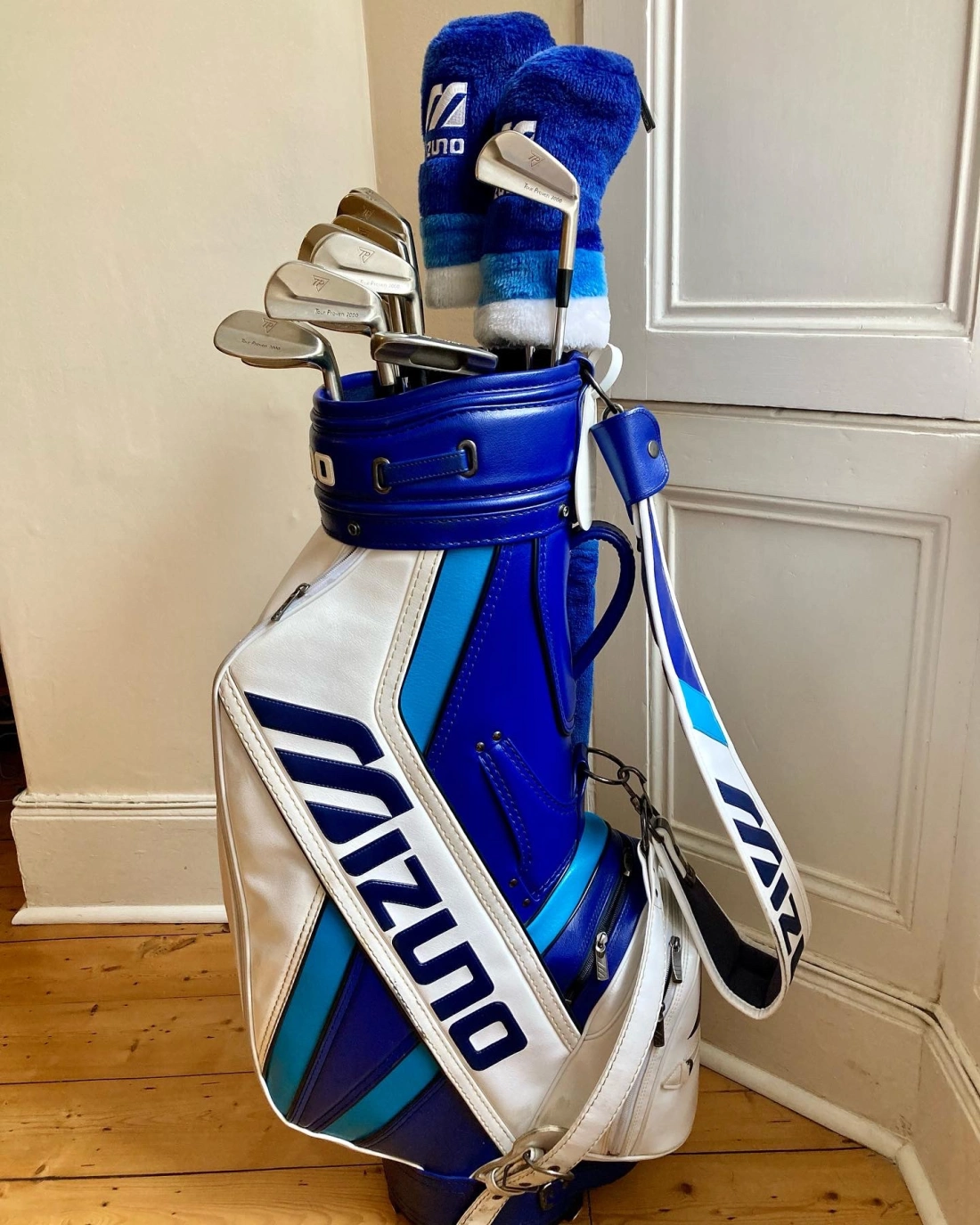
World Master TP 1994 Driver
World Master Tour Issue 3W
TP-2000 1-SW
TP P102 Putter
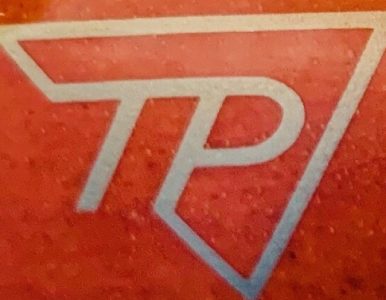
I have been passed some mizuno pro original, probably 60 years old or so…. Are they collectible at all please?
LikeLike
Nice work! Found a lot of my old clubs in here, my favourites being my 1st gen TPZ which then was replaced by the butter-like and very playable MP-32 which I still play with. The TPZ is also in the garage but with basically no grooves left.
Also had the hot metal driver, awful ;), and the Faldo cast wedge, never came to terms with that and not a good feel, made me switch to Cleveland wedges. But just bought a MP-20 wedge so back on track. Also had that staff bag, looked as new a few years back but a rat had made a hole in it so it went. Played that TP-21 with gray back, noop, horrible feel.
Except for a few, Mizuno makes the most beautiful (ok, Titleist you have a few) clubs with (usually) a fantastic feel.
Keep up the good work, soon time to start on the 2000’s, they will also be iconic soon (MP-32 I am looking at you)!
LikeLike
I would like to know when the Mizuno Tour Big Forged Cavity irons were released and where. Also what does the “F” on one wedge mean? Thank you.
LikeLike
Tour Big were mid-late 90’s in Japan I believe. F = Fairway. These were early gap wedges and typically 52*.
LikeLike
Great. Thank you for the information.
LikeLike
Hi,
I was interested to read about the Limited Edition TP2000 Irons. Does anyone know if some TP2000 Irons with X100 DG Shafts were produced ‘with out the M stamped on the soul of the club’? I’m only asking because I own a set, there were very worn and crumbling Victory Grips on when I bought them so had to have been made in the 90’s.
Regards
Glen
LikeLike
I have seen sets like this. I would assume they were for a tour player – TP-2000 were definitely played on tour. Maybe the player simply didn’t like the M on the sole – I for one agree!
LikeLike
Thanks for your comment, that ties in with condition, apart from the cracked/crumbling victory Grips the irons look like they were only used a couple of times.
LikeLike
Sorry…I only know a little English… ↓ translate on please web
初めまして、日本からコメントしています。
私は今mizunoのMSシリーズを集めていて、このブログが大変参考になっています。
(日本でも案外情報が少ないんです・・・)
今回私が集めた物をフォトアルバムに載せましたので、ぜひ見てみてください。
https://minkara.carview.co.jp/userid/1817229/album/1417698/
こちらの記事で見たmizuno pro TH-202やmizuno pro ORIGNALも有りますよ。
LikeLike
Thanks for your comment. Unfortunately I can’t see any of the pictures on your link.
LikeLike
すみません、こちらは見えますか?
LikeLike
Beautiful. I had seen the TH-202 before but hadn’t noticed it was different from the TH-22. It is now added.
The Mizuno Pro wing-back set is great. Same heads as the TP-9 and USA MS-7 – a limited run in Japan.
Thanks for sharing.
LikeLike
MP-7 vs ORIGINAL
少しバックフェイスの形が違って、ORIGINALはブレードが低いです。
ORIGINALのスコアラインはTP-9と同じ、ソールの形が違ってます。
両方とも私のお気に入りです。
MS-700 vs 1978 mizuno staff
MS-700は、最初の”MS”である1978 mizuno staffのリメイクです。
MS-700の方が2度ぐらいストロングロフトになってます。
こちらもお気に入りのアイアンです。
TH-202は、mizunoに聞いたら”1990発売、東邦ゴルフ(ヘッド製造メーカー)のオリジナル”との回答でした。
https://tohogolf.com/
LikeLike
Thank you for the very well-researched article. Recently I acquired a left handed set of ‘Tour Proven Original’ irons. The serial number engraved on the ferrule is: 201UK.
Do you know what that refers to by any chance?
LikeLike
A later TP era serial unless LH had a different system. So 1990 or later if I am correct.
LikeLike
Right I see, thanks.
LikeLike